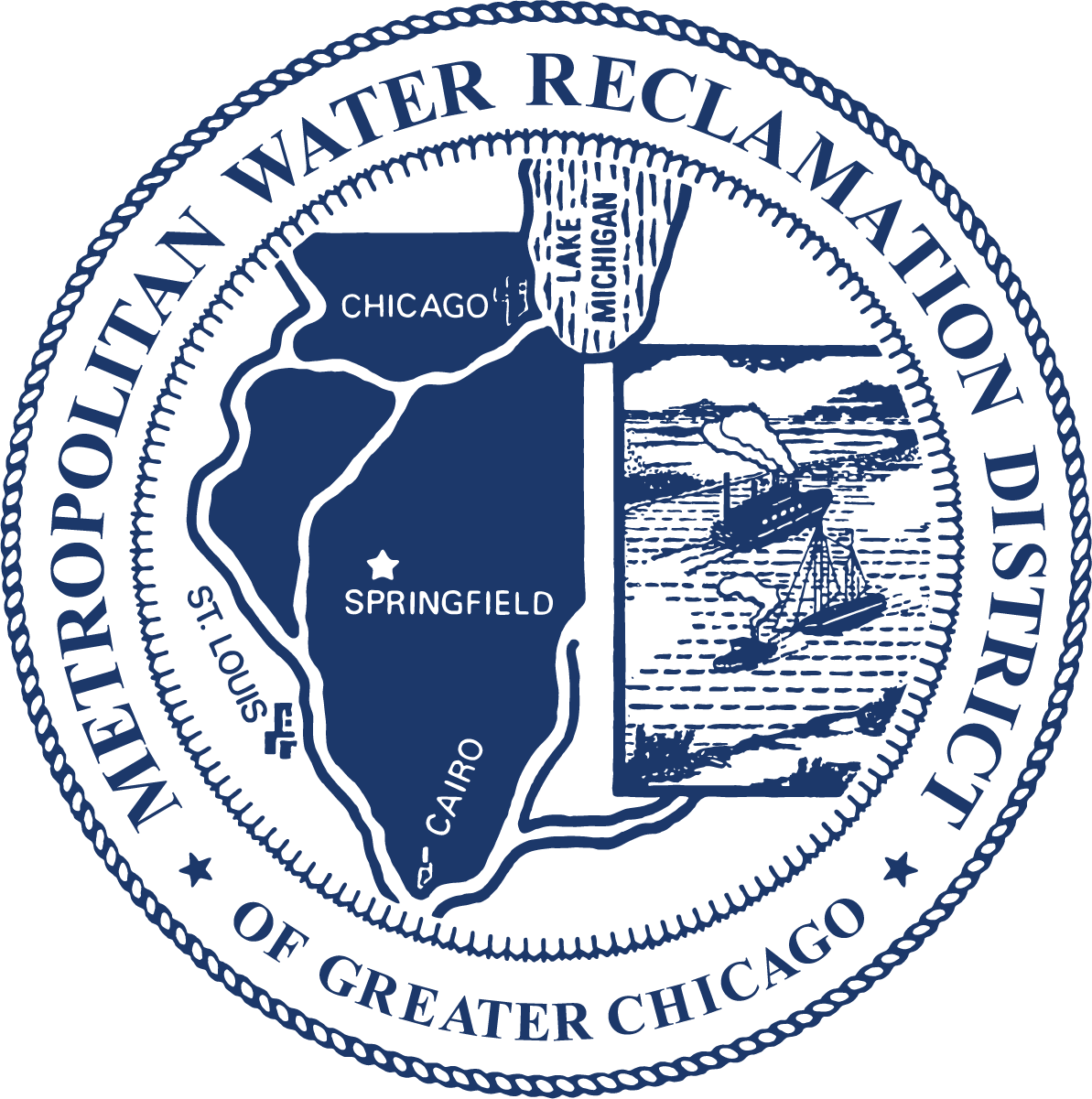Protecting Water Quality
Water quality has improved dramatically in Chicago area rivers and streams thanks to the work of the MWRD. The source of the region’s drinking water, Lake Michigan, has been protected through over a century of the MWRD’s work. The river has also come a long way since the early 20th century when hundreds of sewers emptied directly into it, and the meatpacking industry and other polluters made it a burial ground for their waste.
Today, our water reclamation plants release clean water, our Tunnel and Reservoir Plan captures sewer overflows, and green infrastructure and other stormwater management investments reduce polluted runoff and prevent it from reaching rivers and streams.
Decades of data
The MWRD has collected extensive water quality data on Chicago area waterways for decades, making them some of the most scientifically studied rivers in the world.
We collect monthly water samples at 30 locations throughout our 882-square-mile service area and analyze them for dozens of chemical and biological constituents. We also operate continuous monitors, which collect hourly dissolved oxygen levels, conductance measurements, and temperature readings at 20 locations.
To gain an even closer understanding, we also participated in a revolutionary seven-year study with our partners at Argonne National Laboratory to analyze the genetic composition of thousands of different microorganisms in the river.
The data shows steady improvement in water quality and aquatic life over the past several decades.
What lives in the river?
Our aquatic ecology team tracks fish populations in area waterways. Since monitoring began in the early 1970s, we have seen dramatic improvements in species diversity, from just ten species in 1974 to 77 today. The overall fish population and size of individual fish have also increased as water quality has improved. Our studies with partners at the Shedd Aquarium have also shown that native species have increased while invasive species have declined.
For more information about what lives in the river, see our water quality data and reports and our water quality mapping tool.
How the MWRD protects water quality
Protecting water quality has been the focus of the MWRD’s work since we were founded in 1889.
Developing wastewater treatment technology
We built pilot plants to develop wastewater treatment methods in the early 20th century and then began building modern full treatment facilities in 1922 with the Calumet Water Reclamation Plant (WRP). Today, our seven wastewater treatment plants use state-of-the-art technology to clean an average of 1.3 billion gallons of sewage daily. Our plants clean water to meet strict standards defined by the state of Illinois and release it to waterways.
Aeration stations
Our five Sidestream Elevated Aeration Stations on the Calumet River system and instream aeration stations on the North Branch of the Chicago River at Webster Avenue and Devon Avenue on the North Shore Channel increase dissolved oxygen in the water. Dissolved oxygen is essential for aquatic life.
Watershed Management Ordinance
Our Watershed Management Ordinance (WMO) protects area waterways from harm due to development. Under the WMO, new development is required to incorporate controls to prevent harmful runoff and flooding.
Nutrient recovery
Phosphorus and nitrogen are nutrients that can contribute to algae growth and hurt water quality in rivers and streams by depleting bodies of water of oxygen. Phosphorus comes to our WRPs in sewage and originates from several sources, including human waste, animal waste, fertilizers, detergents, and cleaning agents. We are upgrading our processes to remove and recover nutrients more effectively. A new phosphorus recovery facility at our Stickney WRP allows us to recover nutrients from the wastewater stream to produce a slow-release fertilizer. Through biological and chemical means, we are removing more than 91 percent of total phosphorus from the wastewater stream, and that number will rise as we meet changing standards.
Prescription drug collection
Pharmaceuticals can end up in our water systems and the environment when not disposed of properly. We have collection boxes for safe disposal of drugs at our facilities that are part of the Cook County Prescription Drug Take Back Network. Each year, we collect hundreds of pounds of drugs for safe disposal.
Pollution control and enforcement
We regulate and test the wastewater that industries send to our treatment plants to ensure it does not contain pollutant levels that could harm our treatment process or the waterways. This includes setting protective limits on metals, organic chemicals, and other parameters. Our environmental specialists also respond to reports of illegal dumping and other incidents potentially harming our waterways.
Skimmer boats and debris boat
Our two skimmer boats, Skim Pickens and Skimmy Dipper, patrol the river to remove trash and floating material. Our larger debris boat removes debris that could slow the river’s flow or cause navigation hazards. Together, our skimmer boats and the debris boat pull hundreds of tons of trash and debris each year.
Addressing water quality challenges of the 21st century
Phosphorus Assessment and Reduction Plan
The MWRD’s Phosphorus Assessment and Reduction Plan is a roadmap for reducing phosphorus pollution in the Chicago Area Waterway System in the coming years. The plan aims to identify and address unnatural plant or algae growth that could be caused by excess phosphorus in water.
For more information, see the Phosphorus Assessment and Reduction Plan Fact Sheet.
PFAS “Forever Chemicals”
The MWRD is taking a proactive approach to Per- and polyfluoroalkyl substances (PFAS), the so-called “forever chemicals” found in a wide array of products, including food packaging, stain-resistant carpets, cookware, waterproof apparel, personal care products, and flame retardants. Since these chemicals are so widely used, they inevitably end up in the wastewater that comes to us. We are committed to working closely with federal and state agencies, universities, and national organizations to understand better how PFAS may enter the wastewater treatment process and help fill gaps in current knowledge about these chemicals. We support national EPA and Water Research Foundation studies while sampling and analyzing wastewater for PFAS. Find out more information about PFAS.










